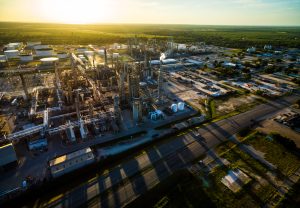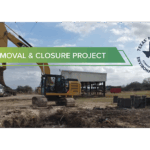
Conroe Phase 2 Environmental Site Assessments are a crucial step in evaluating the environmental conditions of a property, particularly when it comes to potential contamination and its impact on property transactions. This article will provide an in-depth understanding of Phase 2 Assessments, their purpose, key components, the process involved, the regulatory framework, their impact on property transactions, and mitigation and remediation strategies.
Understanding Phase 2 Environmental Site Assessments
Phase 2 Environmental Site Assessments involve a comprehensive investigation of a property to assess the presence and extent of potential hazardous substances in the soil and groundwater. These assessments are typically conducted after the completion of Phase 1 Assessments, which identify potential environmental concerns based on historical records and visual inspections.
When conducting a Phase 2 Environmental Site Assessment, environmental professionals will carefully analyze the data collected during the Phase 1 Assessment to determine the need for further investigation. This phase often involves more detailed sampling and analysis to confirm the presence of contaminants and assess the risk they may pose to human health and the environment.
The Purpose of Phase 2 Assessments
The primary purpose of Phase 2 Environmental Site Assessments in Conroe is to gather detailed information about the environmental conditions of a property. This information helps potential buyers, sellers, and developers make informed decisions regarding property transactions, risk assessment, and the need for mitigation and remediation.
Furthermore, Phase 2 Assessments play a crucial role in regulatory compliance. By identifying potential environmental hazards early in the due diligence process, property owners can take proactive steps to address contamination issues and avoid costly clean-up efforts in the future.
Key Components of Phase 2 Assessments
Phase 2 Environmental Site Assessments consist of several crucial components. These include initial site inspection, soil and groundwater sampling, laboratory analysis, and report preparation.
During the initial site inspection, environmental consultants will visually assess the property for any signs of contamination, such as staining, odors, or evidence of previous hazardous activities. Soil and groundwater sampling involves collecting samples from various locations on the property to determine the extent and concentration of contaminants present. These samples are then sent to a laboratory for analysis to confirm the presence of hazardous substances and assess their potential impact on the surrounding environment.
The Process of Conducting Phase 2 Assessments in Conroe
The process involved in conducting Phase 2 Environmental Site Assessments in Conroe follows a systematic approach to ensure accurate and reliable results. This crucial phase is essential in determining the environmental quality of a property and assessing any potential risks associated with contamination.
Initial Site Inspection
The initial site inspection involves a detailed examination of the property, including visual observations, document reviews, and interviews with property owners or occupants. This step helps identify potential sources of contamination and determines the sampling locations. Environmental experts meticulously assess the site’s history, previous land use, and surrounding areas to create a comprehensive understanding of the property’s environmental context.
Soil and Groundwater Sampling
During the sampling phase, soil and groundwater samples are collected from various locations based on the identified potential sources of contamination. The samples are carefully collected, ensuring accuracy and proper preservation to maintain the integrity of the analysis. Specialized equipment and techniques are employed to extract samples without cross-contamination, ensuring the reliability of the results obtained.
Laboratory Analysis and Report Preparation
The collected samples are sent to accredited laboratories for analysis. The laboratory performs a series of tests to determine the presence and concentration of hazardous substances. Advanced analytical methods such as gas chromatography and mass spectrometry are utilized to detect even trace amounts of contaminants. Based on the analysis results, a comprehensive report is prepared, including detailed findings and recommendations. This report serves as a valuable tool for property owners, developers, and regulatory agencies in making informed decisions regarding the site’s environmental management and remediation strategies.
Regulatory Framework for Phase 2 Assessments
The regulatory framework plays a crucial role in the conduction and adherence to Phase 2 Environmental Site Assessments. It serves as the backbone for ensuring that environmental assessments are conducted thoroughly, accurately, and in compliance with established guidelines and regulations.
Phase 2 assessments are a critical step in identifying potential environmental hazards and assessing the extent of contamination at a site. They are essential for making informed decisions regarding site development, remediation efforts, and overall environmental protection.
Federal and State Environmental Laws
Phase 2 Assessments in Conroe comply with both federal and state environmental laws, ensuring the protection of human health and the environment. These laws provide guidelines for the assessment process, acceptable contamination levels, and the appropriate steps to be taken for mitigation and remediation. By adhering to these laws, environmental consultants and stakeholders can navigate the assessment process effectively and ensure that all necessary measures are taken to address environmental concerns.
Furthermore, federal and state environmental laws are continuously evolving to keep pace with emerging environmental challenges and scientific advancements. This dynamic nature ensures that environmental regulations remain effective in protecting public health and the environment while also accommodating changes in industry practices and technologies.
Role of the Environmental Protection Agency
The Environmental Protection Agency (EPA) is a key regulatory agency responsible for implementing and enforcing environmental laws. The EPA sets standards and provides guidance for Phase 2 Assessments, ensuring consistency in the approach and methodology used in environmental investigations. Through its oversight and regulatory functions, the EPA plays a crucial role in safeguarding environmental quality and promoting sustainable practices in site assessments and remediation efforts.
Moreover, the EPA collaborates with state environmental agencies to ensure a coordinated and cohesive regulatory framework for environmental assessments nationwide. This partnership enhances regulatory oversight, fosters information sharing, and promotes best practices in environmental management. By working together, federal and state agencies can leverage their respective expertise and resources to address complex environmental challenges effectively and protect the health and well-being of communities across the country.
The Impact of Phase 2 Assessments on Property Transactions
Phase 2 Environmental Site Assessments significantly influence property transactions and the decision-making process for buyers and sellers.
Risk Assessment for Buyers and Sellers
Phase 2 Assessments provide valuable information for buyers and sellers to assess the potential risks associated with a property. The findings help them evaluate the financial and legal implications of purchasing or selling a contaminated property.
Implications for Property Value and Development
The presence of contamination can impact property value and the feasibility of development projects. Phase 2 Assessments provide insights into the extent of contamination and the associated costs for remediation, enabling informed decision-making in property transactions and development plans.
Mitigation and Remediation Strategies
When contamination is identified, mitigation and remediation strategies are necessary to minimize risks and restore the property to an acceptable condition.
Common Contaminants and Their Treatment
Contaminants such as petroleum hydrocarbons, heavy metals, and solvents are commonly encountered during Phase 2 Assessments. Remediation techniques, including soil excavation, bioremediation, and soil vapor extraction, are employed to remove or reduce the contaminants to acceptable levels.
Long-Term Monitoring and Maintenance Plans
Following remediation, long-term monitoring and maintenance plans are implemented to ensure that the property remains in compliance with environmental regulations. Regular inspections and sampling are conducted to verify the effectiveness of remediation efforts and identify any potential issues.
In conclusion, Phase 2 Environmental Site Assessments play a vital role in evaluating the environmental conditions of properties in Conroe. These assessments help potential buyers, sellers, and developers make informed decisions, assess risks, and implement appropriate mitigation and remediation strategies. By following the regulatory framework and understanding the impact of contamination on property transactions, stakeholders can protect both human health and the environment while navigating property transactions effectively.
If you’re facing environmental challenges or planning a property transaction in Conroe, let ESE Partners guide you through the complexities of Phase 2 Environmental Site Assessments. Our team of skilled environmental engineers and scientists are committed to responsibly moving your business forward with innovative, sustainable solutions tailored to your unique needs. With our extensive experience and deep understanding of environmental regulations, we deliver honest, quality-driven results that not only recognize opportunities for stakeholders but also enhance community well-being. Don’t navigate environmental problem-solving alone. Request A Proposal today and partner with ESE Partners for comprehensive support in assessment, remediation, and compliance.








